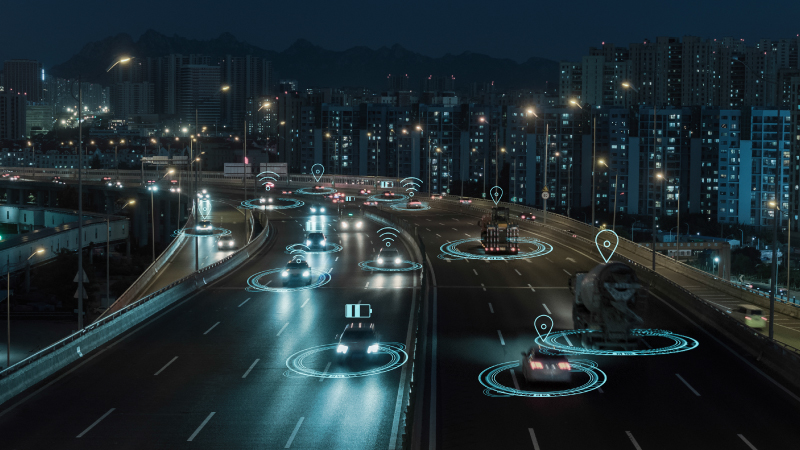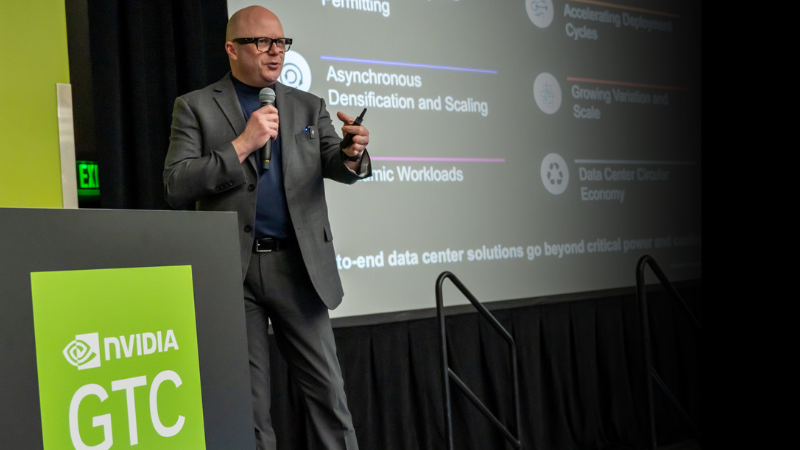As AI matures toward an agentic future, innovation in infrastructure will determine how it transforms human potential—not just what AI can do, but what people can achieve with it.
The future of AI isn’t just creating – it's about doing. Today’s generative AI (genAI) excels at recognizing and replicating patterns in data, from language to images to complex systems. This replicative intelligence is driving unprecedented operational efficiency across industries, from financial services to healthcare, government operations to manufacturing.
But the next leap is coming. As AI systems evolve to autonomously plan, reason, and execute multi-step workflows, we are approaching an agentic AI society—where AI owns processes end-to-end. AI becomes a more dependable collaborator, so people can focus on creative problem-solving and strategic decisions. To unlock this future, though, we need infrastructure innovation that keeps pace with AI’s ambitions—because even the most advanced systems can’t thrive on outdated foundations.
Agentic AI: Your always-on digital team
Agentic AI works like your ideal employee. Need someone to process invoices? You onboard an AI that learns your systems and handles the entire workflow—no training manuals needed. Unlike tools that wait for commands, these agents own their tasks completely.
This is work reimagined. Agentic AI handles repetitive tasks with perfect recall—whether it's invoice processing or code reviews—giving professionals more time for client strategy, creative solutions, and breakthrough thinking. Unlike conventional automation scripts that follow fixed rules, agents can adapt dynamically as tasks or contexts change, making them far more flexible and resilient. What begins with coding assistants today will soon redefine entire industries.
The path to widespread agentic AI adoption
The momentum toward agentic AI is already here. Take Tesla’s Full Self-Driving system, for example: it perceives its surroundings, makes driving decisions, and learns from every trip. Meanwhile, NVIDIA’s latest AI blueprint integrates agentic features like chain-of-thought reasoning and task planning, enabling video search and summarization at scale. As Jensen Huang puts it, we’re entering an era where AI doesn’t just create—but also "proceed, reason, plan and act."
More tech leaders share this vision. OpenAI's Sam Altman anticipates the first "virtual employees" entering workplaces by 2025, while Microsoft's Satya Nadella sees these agents evolving into cross-platform orchestrators that automate end-to-end workflows. To keep pace, universities are embedding AI into every discipline, preparing graduates for roles where human-AI collaboration is expected. Tomorrow’s workforce—across every industry—will partner with AI to redefine how work gets done. This progress is accelerating adoption: Deloitte predicts that 25% of companies using generative AI will launch agentic AI pilots by 2025, growing to 50% by 2027.
Widespread adoption of agentic AI may be the catalyst for an edge revolution, driving demand for low-latency, small-footprint AI systems that can operate autonomously at the network’s edge or onsite.
The AI data center imperative
AI is rewriting data center design at every scale. Servers now pack central processing units (CPUs) with graphics processing units (GPUs) and tensor processing units (TPUs) with high-bandwidth memory. Racks routinely exceed 100 kilowatt (kW) densities. Even 10-megawatt (MW) facilities, once considered large, now serve as edge deployments for low-latency requirements. Energy demands tell the same story: data centers already consume 1.5% of global power, set to double by 2030. In response, liquid cooling and AI-optimized power distribution are becoming AI data center necessities, evolving from specialized solutions.
AI infrastructure innovation — and the talent to match
However, enabling the agentic AI future demands more than upgrading existing systems. The biggest advances will come from rethinking how power, cooling, and intelligent automation work together. When these systems are designed in sync, data centers can scale more efficiently and adapt in real time to AI’s evolving demands.
The AI infrastructure shift also calls for a renewed focus on people. Talent readiness is just as critical as technology readiness. Next-gen data centers will need engineers who not only understand these complex systems, but can think creatively, work across disciplines, and drive innovation from the ground up.
Building the foundation for agentic AI society
Agentic AI is changing how work happens — and that means rethinking how infrastructure supports it. Today’s systems must be designed not just for performance, but for adaptability: blending thermal efficiency, intelligent power distribution, and autonomous control into a unified architecture. As AI moves from reactive tools to proactive agents, data centers must evolve from passive enablers to active participants in the digital workflow.
This transformation also demands a new kind of workforce. The most advanced infrastructure won’t fulfill its potential without talent that understands the complexity behind it — and has the creative fluency to push it forward. Technology readiness must be matched with human readiness.
The future belongs to infrastructure that doesn’t just respond to AI’s demands but actively shapes its potential.
Prepare for the agentic AI era
Discover how AI is redefining infrastructure demands—from power to cooling to autonomous operations. Visit the Vertiv™ AI Hub to explore insights, trends, and the future of AI-ready data centers.






